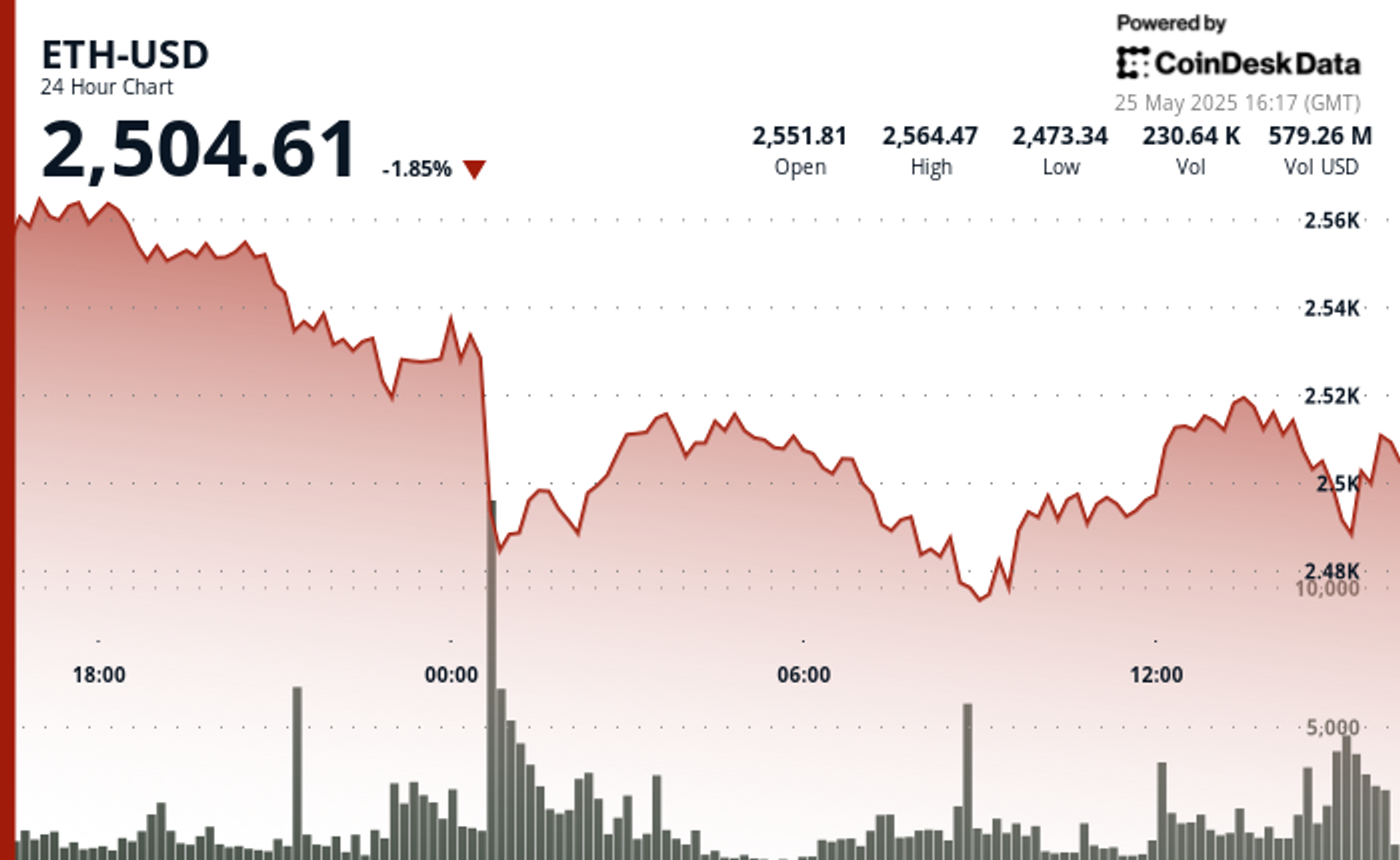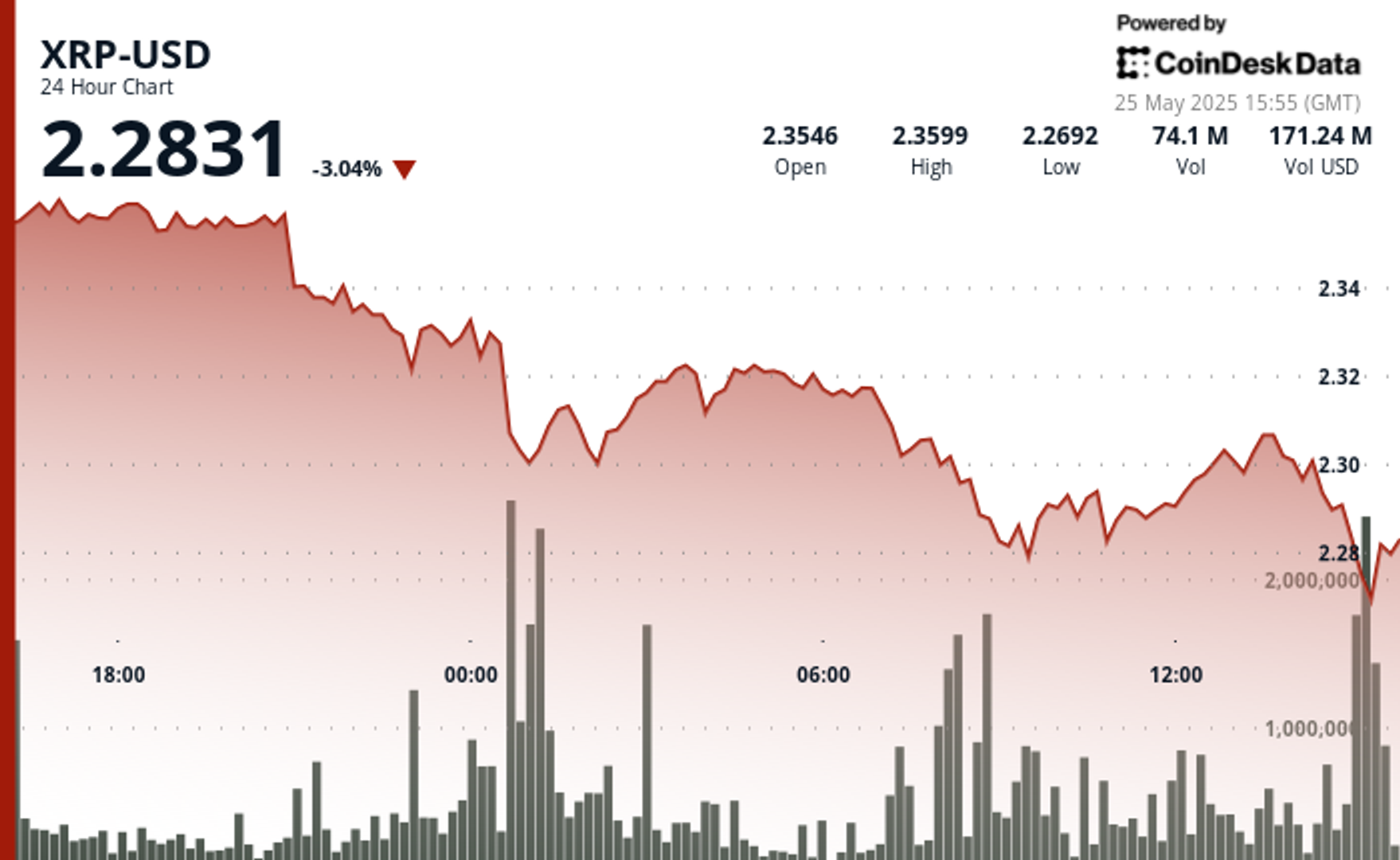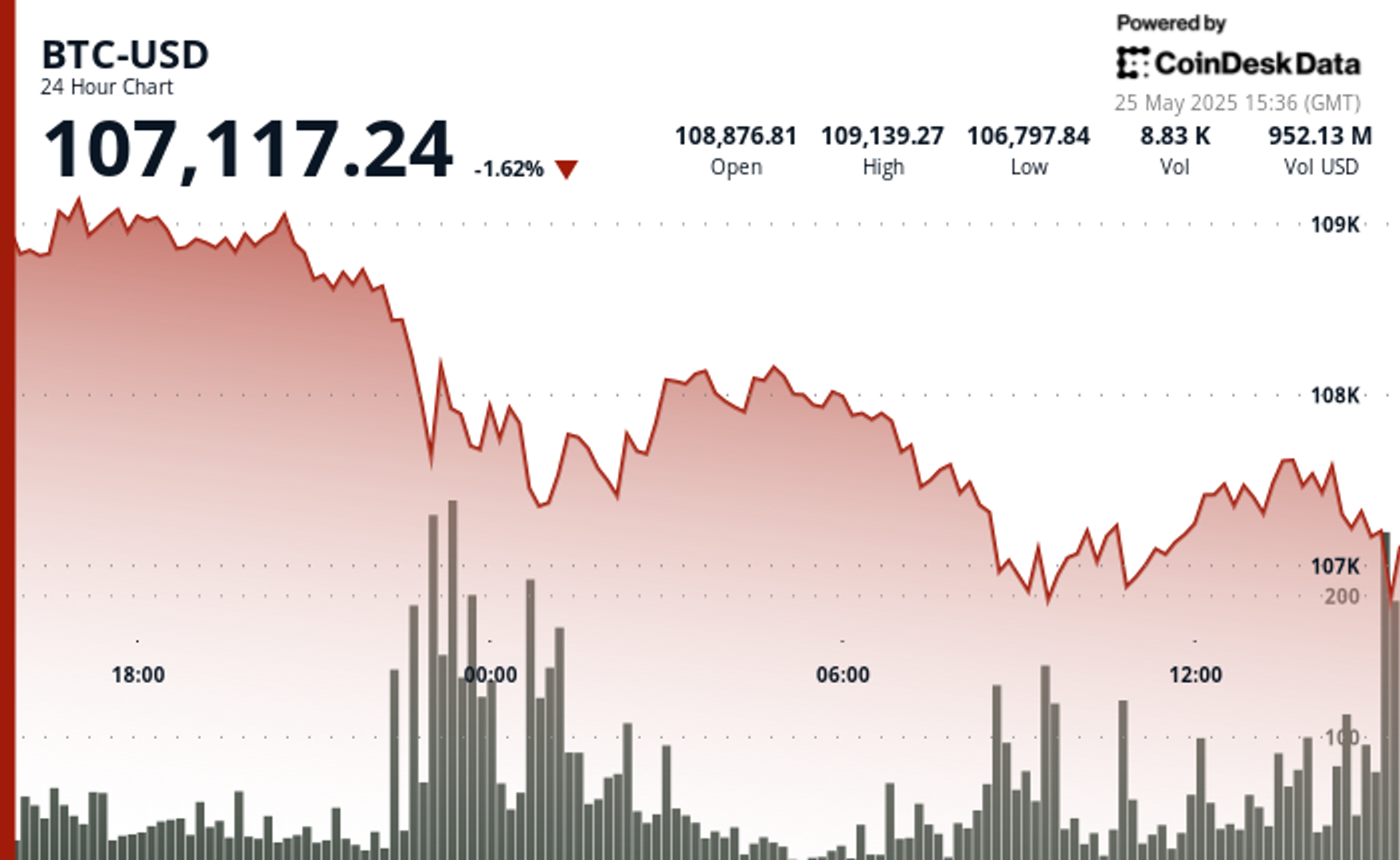Uncategorized
How a Journalist Went From Exposing Mexican Cartels to Losing His Crypto Life Savings

On a balmy evening in 2023 on the east coast of Spain, Olivier Acuña sat at his computer to transfer his life savings to another cryptocurrency wallet, as he had done hundreds of times before.
“Sending crypto always induces anxiety,” Acuña told CoinDesk. This rang painfully true that night.
As soon as Acuña hit send, it was over: $400,000 worth of crypto — all his money — was gone, pilfered by an anonymous phishing scammer. A piercing noise rang in Acuña’s ears, his temperature rose and his fists clenched.
Acuña’s loss demonstrates that no one is immune to crypto hacks. He’s a seven-year crypto industry veteran, someone who grasps the need for wariness given the dangers that lurk around blockchains. Before that, he was a journalist for decades, where staying alert was a must as he faced violent drug cartels in Mexico and torture in prison.
And yet he became one of the many victims of crypto scams. In 2023, U.S. officials received 69,000 reports of crypto theft totaling more than $5.6 billion.
Getting that money back can be hard. If your normal bank account gets breached, insurance will almost certainly cover your losses. But there’s no highly regulated system like that in crypto, which is famously and quite intentionally decentralized. While that disintermediation gives crypto users the freedom from institutions that they crave, it’s also a double-edged sword. The omission of gatekeepers can also leave people a single button click away from ruin.
The hack itself was nothing special. Because Acuña couldn’t access his funds on a Ledger hardware device, he reached out to customer support via social media. An impersonator swooped in and, following 30 minutes of deception, Acuña was stuck in the scammer’s web.
“Phishing scams remain incredibly prolific today,” Adrian Hetman, head of triaging at Web3 security researcher Immunefi, told CoinDesk. “Phishing attempts are a growing concern in crypto, as criminals see it as an effective way to steal user funds at scale and apply social engineering for more sophisticated attacks on project infrastructure.”
Acuña was helpless again, this time at the mercy of a blockchain that was once his salvation following a horrendous ordeal of false imprisonment in Mexico.
Working undercover
Acuña began working as a journalist in the 1990s — a career that confronted him with government censorship, false imprisonment and death threats.
His work on organized crime, elections and corruption soon got him noticed by United Press International (UPI) and Reforma, where he began diving deeper into one of the most notorious and violent drug cartels in the world.
He was based in Sinaloa, a state in Mexico that runs down the west coast from Los Mochis to Mazatlán. The fertile, mountainous territory emerged as a hotbed of organized crime, leading to the formation of Joaquín «El Chapo» Guzmán’s infamous Sinaloa Cartel.

Acuña’s coverage of the cartel eventually led to him working independently as a freelance journalist with his work being picked up by the likes of Associated Press and Reuters. This was when his career in Mexico reached a turbulent crescendo.
Authorities caught wind of one of Acuña’s stories on corruption and decided enough was enough. They accused him of hiding a weapon that belonged to the Attorney General’s office. Acuña says he was tortured for 16 hours.
“One day, I was thrown into a vehicle in the most violent manner you can imagine,» he said. «They sent a police commander widely known for torturing people, and they abducted me. For 16 hours they waterboarded me, tied me up, cut off my circulation, folded me backwards. At one point, they told me, ‘Next door we have your family. We will bring them in here one by one and kill them in front of you until you tell us where the gun is.’”
Acuña was subsequently jailed for two years on accusations — which Acuña says were false — that were later dropped. He filed a human rights lawsuit against Mexican authorities.
Crypto salvation, or not
In 2017, Acuña wiped the slate clean of his tortuous past, entering the wonderfully weird world of crypto, enjoying stints as a public relations officer at payments firm Electroneum, a television producer at BloxLive and most recently another public relations role at DePIN company IOTEX.
His tough background prepared him for the crypto industry, which despite growing acceptance by the traditional finance sector, continues to grapple with the Wild West environment of its early days.
While Acuña might not have the most common backstory for those working in crypto, it remains a pertinent reminder that the allure of the crypto industry is not just speculative financial gain: It’s also an industry that checks the power of governments, banks and elites, which appealed to Acuña.
“The first day that I began writing about crypto and blockchain, I said, ‘Here it is, the solution to all of the issues of the lack of freedom of expression. Here it is, the solution to government corruption. Here it is, finally something that I can have faith in and have and do passionately,’” Acuña told CoinDesk.
Despite losing his life savings, Acuña continues to work in the crypto industry — although he warns that it’s a long way away from going mainstream.
“If we ever want mass adoption, this needs to be seamless,” he said. At the moment, the user experience is “anxiety-inducing. Every time I send crypto now, I think, ‘Have I done it wrong? Am I going to lose my money?’ Each and every time.’”
Unless “we get an application where all your crypto is in that same app, and it doesn’t matter what freaking network it is, you can convert it into whatever you want, to convert it and send it, then I just don’t see it” taking off.
This remains a key hurdle for the industry; tech-savvy millennials know how to buy an asset on Ethereum, bridge it to Solana and buy a memecoin on Pump.fun before sending that to an exchange, but the majority of regular people don’t.
“I don’t want to exit crypto, I’m still excited about crypto,» Acuña said. «Will moving money around always be traumatic? Yes. But I love this sector.”
Uncategorized
Ethereum Surges After Holding $2,477, Fueled by Very Heavy Trading Volume

Global economic tensions and trade disputes continue to influence cryptocurrency markets, with ETH showing resilience despite broader market uncertainty.
The second-largest cryptocurrency is currently navigating a critical technical zone between $2,500-$2,530, which analysts identify as immediate resistance that must be overcome for continued upward movement.
Institutional interest remains strong, with spot Ethereum ETFs recording consecutive days of positive inflows, signaling growing confidence from larger investors despite the recent volatility.
Technical Analysis Highlights
- 24-hour ETH price action revealed a substantial 3.5% range ($99.85).
- Sharp sell-off during midnight hour saw price plummet to $2,477.40, establishing a key support zone.
- Extraordinary volume (291,395 units, nearly 3x average) confirmed the significance of the support level.
- Buyers stepped in at the $2,467-$2,480 support band, confirmed by high-volume accumulation during the 08:00-09:00 period.
- Recent price action shows bullish momentum with ETH reclaiming the $2,515 level.
- Potential higher low pattern suggests the correction may have found its bottom.
- $2,520-$2,530 area remains the immediate resistance to overcome for continued upward movement.
- Significant bullish surge at 13:35 saw price jump from $2,515.85 to $2,521.79, accompanied by exceptional volume (5,839 units).
- Sharp reversal occurred at 14:00, with price dropping 5.07 points to $2,508.02 on heavy volume (4,043 units).
- Hourly range of 14.46 points ($2,508.02-$2,522.48) demonstrates market indecision.
External References
- «Ethereum Holds Above Key Prices – Data Points To $2,900 Level As Bullish Trigger«, NewsBTC, published May 24, 2025.
- «Ethereum Forms Inverse H&S – Bulls Eye Breakout Above $2,700 Level«, Bitcoinist, published May 25, 2025.
- «Ethereum Price Analysis: Is ETH Primed for a ‘Healthy’ Correction?«, CryptoPotato, published May 25, 2025.
Uncategorized
XRP Plunges Below $2.30 Amid Heavy Selling Pressure

Global economic tensions are weighing heavily on cryptocurrency markets as XRP experiences a significant correction amid heavy selling pressure.
The recent announcement of potential 50% tariffs on European Union imports by the US government has triggered widespread market uncertainty, with XRP falling alongside most major cryptocurrencies despite Bitcoin recently reaching new all-time highs.
Technical analysts point to critical support at the $2.25-$2.26 range, with market watchers warning that a break below this level could trigger deeper corrections toward the $1.55-$1.90 zone.
Meanwhile, institutional interest remains strong with Volatility Shares launching an XRP futures ETF and leveraged ETF inflows surging despite the price dip, suggesting Wall Street continues accumulating positions during market weakness.
Technical Analysis Highlights
- XRP underwent a notable 3.46% correction over the 24-hour period, with price declining from $2.361 to $2.303, creating an overall range of $0.084 (3.57%).
- The most significant price action occurred during the midnight hour (00:00), when XRP plummeted to $2.297 on exceptionally high volume (37.1M), establishing a strong volume-based support zone.
- A secondary sell-off at 08:00 saw price touch the period low of $2.280 with the highest volume spike (39.9M), confirming a double-bottom formation.
- In the last hour, XRP experienced significant volatility with a recovery attempt following the earlier correction.
- After reaching a low of $2.297 at 13:11, price formed a base around $2.298 before staging a substantial rally beginning at 13:27, peaking at $2.307 at 13:36-13:39 with exceptionally high volume (627K-480K).
- This bullish momentum created a clear resistance zone at $2.307, which was tested multiple times.
- The final 15 minutes saw profit-taking pressure emerge, with price retracing to $2.300, establishing a short-term support level that aligns with the psychological $2.30 threshold.
External References
- «XRP Price Watch: Consolidation or Collapse? Market Holds Breath Near $2.35«, Bitcoin.com News, published May 24, 2025.
- «XRP Price Prediction For May 25«, CoinPedia, published May 25, 2025.
- «XRP Risks Fall To $1.55 If This Support Level Fails – Analyst«, NewsBTC, published May 25, 2025.
Uncategorized
Bitcoin Drops Below $107.5K as Trump Tariff Threat Triggers Crypto Sell-Off

Bitcoin’s recent pullback has established strong volume-based resistance near $108,300, with support forming in the $106,700-$107,000 zone.
The correction accelerated with a notable price surge from $107,373 to $107,671 between 13:06-13:36, followed by a sharp reversal.
Technical analysis suggests Bitcoin is now trading within a compression zone, trapped between two major fair value gaps that will determine the upcoming market direction.
If bulls reclaim the $109K to $110K area, price could push toward resistance beyond $112K, while a break below $107,000 might test liquidity around $106K.
Technical Analysis Breakdown
- The decline accelerated during the 22:00-23:00 hour on May 24th with exceptionally high volume (16,335 BTC), establishing a strong volume-based resistance near $108,300.
- Support has formed in the $106,700-$107,000 zone where buyers emerged during the 09:00-10:00 period on May 25th, though recovery attempts have been modest with price consolidating around $107,500.
- The overall technical structure suggests a short-term bearish trend with potential for further consolidation before directional clarity emerges.
- Bitcoin experienced significant volatility with a notable price surge from $107,373 to $107,671 between 13:06-13:36, followed by a sharp reversal that saw prices decline to $107,393 by 14:00.
- The most substantial price movement occurred during the 13:35 minute candle where BTC jumped nearly $150 with exceptionally high volume (148.76 BTC), establishing temporary resistance around $107,630.
- Support formed near $107,400 where buyers emerged during the final minutes of the period, though the overall technical structure suggests continued consolidation within the broader correction from the $109,239 high.
External References
- «Bitcoin Price Prediction for May 25: Will Bulls Defend $108K or Is a Deeper Drop Ahead?«, Coin Edition, published May 24, 2025.
- «Why is Bitcoin Price Dropping Now? Will BTC Price Go Down to $100K?«, CoinPedia, published May 24, 2025.
- «Bitcoin Price Analysis: BTC Displays Signs of Weakness Following New All-Time High«, CryptoPotato, published May 25, 2025.
-

 Fashion7 месяцев ago
Fashion7 месяцев agoThese \’90s fashion trends are making a comeback in 2017
-

 Entertainment7 месяцев ago
Entertainment7 месяцев agoThe final 6 \’Game of Thrones\’ episodes might feel like a full season
-

 Fashion7 месяцев ago
Fashion7 месяцев agoAccording to Dior Couture, this taboo fashion accessory is back
-

 Entertainment7 месяцев ago
Entertainment7 месяцев agoThe old and New Edition cast comes together to perform
-

 Business7 месяцев ago
Business7 месяцев agoUber and Lyft are finally available in all of New York State
-

 Sports7 месяцев ago
Sports7 месяцев agoPhillies\’ Aaron Altherr makes mind-boggling barehanded play
-

 Sports7 месяцев ago
Sports7 месяцев agoSteph Curry finally got the contract he deserves from the Warriors
-

 Entertainment7 месяцев ago
Entertainment7 месяцев ago\’Better Call Saul\’ has been renewed for a fourth season





